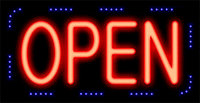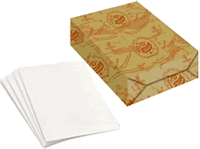
COVID
STATUS
Yes, We Are Open
& Accepting Orders
Since Commerial Printing is considered an Essential Business, all of our locations are operating, and orders are shipping on time.
Now that the covid vaccines are available we don't anticipate any future disruptions.
TSOQ Printing, we’re taking every step possible—in accordance with government guidelines—to keep employees safe and customers satisfied as we continue with operations.

A Powerhouse of Help…
Photoshop Tutorials
Skin Tone Correction
Background Blurring
Color Cast Correction
Hollywood Eyes
Image Reflections
Printing Resources
Art Preparation
Camera Ready Art
Creating PDF Files
PDF Advantages
Typography Tips
Vector Artwork
Color Accuracy
Color Accuracy
Monitor Color
Color Spaces
Ink Colors
Printing and Paper
Printing Papers
Paper Coatings
Folding Types
Foil & Embossing
Specs & Templates
Envelope Sizes & Specs
Postcard Sizes & Postage
Paper Sizes
Templates
Glossary of Terms

Design Tips
Logo Design Tips
Direct Mail Design
Business Card Design
Catalog & Booklet Design
Flyer Design
Postcard Design
— Commercial Printing Paper Types —
Different Types and Characteristics of Papers

Choosing the right paper can be challenging if you are unfamiliar with the various paper types and weights. Below are explanations of some of the options available. Feel free to call TSOQ Printing and we will be happy to discuss your needs and help you make an appropriate choice for your printing project!
Coated and Uncoated Papers
Printing papers used in commercial printing are divided into two major classes: coated and uncoated.
Each have their advantages and disadvantages.
Coated Paper
Advantages: Coated paper is the typical paper of choice for marketing material. A coated sheet keeps your printing from looking “fuzzy” by restricting ink from absorbing into the surface of the paper. Often containing clay, the sealants in a coated paper produce sharper text and reduce dot gain in photos and gradients. Coated paper is also more opaque than uncoated sheet, thus better suited to 2-sided printing without substantial bleed through from the back side printing, even on thin paper.
Although most coated paper is “shiny”(gloss), many other options are available. Coated papers come in gloss, matte, dull, satin, and other finishes. In addition to the paper finish options, there are also many different paper coatings that can be applied to the paper to control the sheen.
Disadvantages: Coated papers are more difficult to write on, especially with a pencil. They may also not work well with your desktop printed (laser or ink jet). For this reason letterhead, forms and other types of printing that you intend to write or print on are typically printed on an uncoated paper. In recent years many paper coating do seem to have improved on their writability, so you may want to test product if you really want both a coated paper and the ability to write or print on them afterwards.
Coated Paper - Grades of Quality
Coated papers do come in many grades of quality, from premium and #1 Grade (best), to as low as a #5 Grade. The higher the paper grade the better the printing reproduction. In addition to producing superior quality printing, the more premium coated papers are brighter and whiter. Lower grade papers still offer the advantages of improved opacity and dot gain, but will lose a little of the superior full color printing reproduction, and have a more yellowed look.
Uncoated Paper
Uncoated Paper - an uncoated paper stock has not been coated with clay or other surface sealants. Inks dry by absorbing into the paper. Uncoated papers comprise a vast number of paper types and are available in a variety of surfaces, both smooth and textured (such as "laid" and "linen"). Some fine quality uncoated sheets contain a watermark.
Weight - the weight of a paper refers to its thickness and is typically measured in pounds (such as 20#) and points (such as 10 PT). The higher the number, the thicker the paper for that "type" of paper. Paper weights in commercial printing can be very confusing. For example, a sheet of 20# bond (probably what you use on your copy machine) is about the same thickness as a sheet of 50# offset. A more meaningful measurement is to pay attention to is a paper's caliper. See the paper caliper chart.
Stationery Papers
Three general paper thickness categories used to describe the basis weight of matching stationery papers are writing, text and cover weight papers. They are commonly used for a company's matching letterhead, envelope, business cards and other collateral items.
Writing Paper - a letterhead-weight stock, typically 24# or 28# writing, and often has a watermark.
Text Paper - is thicker than a writing paper, but not as thick as a cover paper (card stock). Text-weight stationery paper is usually a 70# or 80# text.
Cover Paper - a card stock paper, such as those used for a business card or report cover. They are usually an 80# cover weight, although some brands of paper offer cover weight paper that is as thin as a 65# cover or as thick as a 100# cover or heavier.
Opacity - a paper's opacity is determined by its weight, ingredients and absorbency. A paper's opacity determines how much printing will show through on the reverse side of a sheet. Opacity is expressed in terms of it's percentage of reflection. Complete opacity is 100% and complete transparency is 0%.
Brightness - the brightness of a sheet of paper measures the percentage of blue light it reflects. The brightness of a piece of paper is typically expressed on a scale of 1 to 100, with 100 being the brightest. Most papers reflect 60-90% of light. The brightness of a paper affects readability, the perception of ink color and the contrast between light and dark hues.